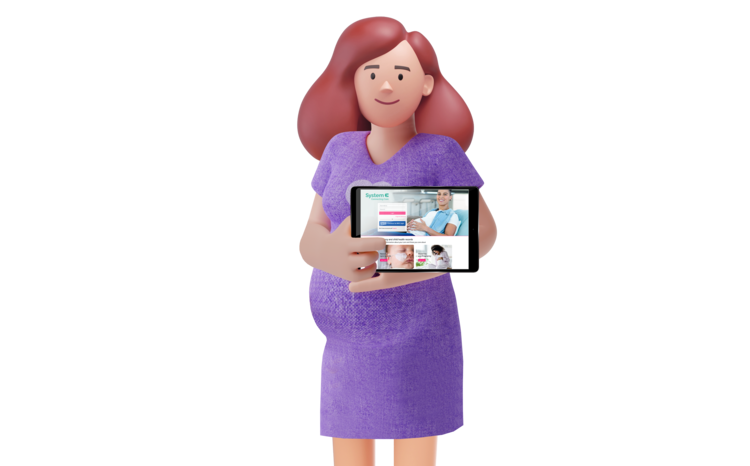Maternity digitisation is long overdue
- 17 March 2022

In a piece for Digital Health, Ted Reynolds, a healthcare specialist at Restore Digital, explores the progress in making the maternity records of all expectant mothers electronic by 2024, and why he believes retrospective records should be the next priority for the NHS.
The digitisation of maternity records has been long overdue. During pregnancy, women navigate their way through a complex care route of midwives, GPs, health visitors, obstetricians – the list, depending on the pregnancy and the patient, can stretch far and wide across the whole NHS. The one constant is the burden of sharing maternity information is placed predominately on the patient.
Mothers-to-be are asked to take to each of their appointments, a hardcopy of their maternity information. They will be asked repeatedly to share information about their medical and maternity history. Unsurprisingly, things get lost – paper goes missing, women forget or don’t recognise the clinical significance of some information.
All of this creates greater risk to the patient’s care and safety – but digitisation of maternity records, a key element of The Maternity Transformation Programme, aims to change that.
The drive for better maternity care
Following the Better Births’ report and the Morecambe Bay Investigation from 2015, the NHS and its partners came together to create The Maternity Transformation programme. Its goal was to halve the number of stillbirths, neonatal and maternal deaths and brain injuries by 2025.
The Maternity Transformation Programme is more than just digitising maternity records, in fact there are ten work streams in place to achieve the Better Births’ vision, including Sharing Data and Information, Increasing Choice and Personalisation, Harnessing Digital Technology and Improving Prevention.
How digital records can make a difference
While far from complete, the rollout of patient-held digital maternity records is a success story for the NHS. As of September 2019, 105,000 mums-to-be had been offered access to their digital maternity records, with 60 per cent accessing them. This far exceeded the target initially set by the NHS of April 2020.
It is perhaps not surprising that digitally savvy mums could immediately see the benefit of having online access to their records at such a critical point in their lives.
By 2023 / 2024 all pregnant women will be able to electronically access their records. Last summer the NHS announced £52m to fast -track the provision of online maternity records, overseen by the first national digital midwife.
NHS chief midwife Jacqueline Dunkley-Bent said: “The records will allow women to easily access data about their pregnancy as well as curated information about wider issues around pregnancy in order to make well-informed decisions.
“As we continue to implement the NHS Long Term Plan, it is right that digital maternity is being fast-tracked so that women, as well as midwives and their colleagues, across the country will get the support they need to deliver the best start in life for every child.”
This latest funding followed the Government’s promise to also bring forward the digitisation of child health records. Often referred to as the ‘Red Book’ it contains a child’s growth and development information from birth. The child health record will be made electronic from birth starting in April 2023 – a year earlier than originally planned.
Sharing data and information
With digitisation comes the potential for greater patient and public health gains. If we’ve learnt just one important lesson so far from the Covid-19 pandemic it is the value of patient data.
As well as benefiting individual women, the NHS wants to use data to drive improvement in maternity services at local, regional and national levels.
The targets set within The Maternity Transformation Programme are ambitious. But do they go far enough in order to achieve their goals of reducing the number of stillbirths, neonatal and maternal deaths and brain injuries?
One important further consideration could be retrospective digitisation.
Take for example, if five years ago a woman in her early 20s had given birth the chances are she may become pregnant again in the near future. Under the current plans, this patient could have her latest maternity information digitised. But her previous maternity history would still be hardcopy and the burden of sharing information with all the various care providers would be back on her.
The data insight that could be gleaned from maternity records pre 2023 / 2024 could have a significant impact on the care and health of all mothers and babies today.
The challenge the NHS faces to digitise maternity records shouldn’t be underestimated. It’s perhaps one of the most complex and varied across healthcare. But it’s also a challenge that has been universally welcomed by clinicians and patients. It may be long overdue, but thankfully, it’s due date is just a few years away.



